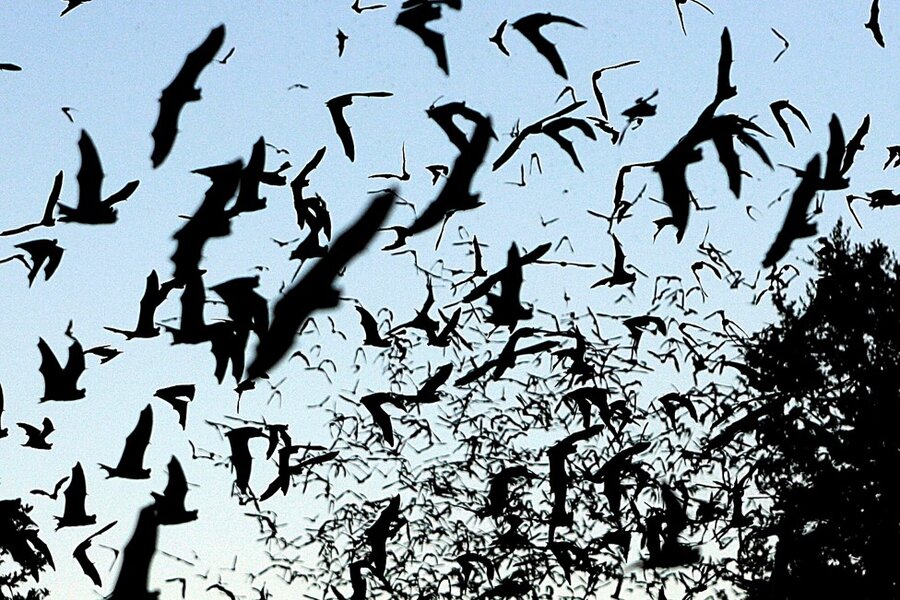What do bats have to do with Halloween? It's more than pop culture.
Loading...
Bats are right up there with jack-o'-lanterns as Halloween fixtures, but the flying mammals do have a legitimate excuse for turning up around Oct. 31.
Fall is prime time for bats in the Northeast, as they try to get one more good meal in before hibernation or flying south for the winter, Nate Fuller, graduate student in Boston University's bat biology program, told Quartz. For biological reasons, late October seems to hit the sweet spot for bat snacking as well as trick-or-treaters.
Mr. Fuller's theory is that Irish and Scottish immigrants who brought their early pre-Halloween traditions to the United States would have seen the bats swarming around this time and begun to associate the unusual winged creatures with the fall holiday, according to Quartz. This would have been in the mid-1800s, certainly time enough for the Celtic holiday of Samhain to morph into the stuff of Halloween candy sales.
Bat hibernation varies, wrote Shannon Curie for the Michigan-based Organization for Bat Conservation. Some species of bats fly south for the winter starting in September, meaning they are on the move throughout the eastern United States throughout the Halloween season. Bats in the Western United States often do not migrate or hibernate for the winter because they can find homes with a warm enough climate to subsist all year.
"By late October most bats from Chicago to Boston and north have already started to hibernate in a mine or cave or have migrated well south of (the northern) area," Allen Kurta, a biology professor who specializes in bats at Eastern Michigan University, tells The Christian Science Monitor.
Bat cookies at Halloween might not just be the result of migration patterns.
"Here in the US, people are afraid of bats, and that could be the real reason they're associated with Halloween," says Tom French, the assistant director of the Massachusetts Division of Fisheries and Wildlife.
While bats have the seasonal proximity to be good Halloween symbols, they should not really inspire dread, French says. Most bats are quite small, and they eat insects. And he sees attitudes toward the flying mammals shifting in recent years in the wake of concerns over population declines. One species – the Northern Long-eared Bat – was recently added to the federal Endangered Species List.
"We've had a real outpouring of concern for bats that I never knew was out there," French says.
As a bat researcher, Mr. Fuller told Quartz feels part of his role is to give people positive exposure so that Count Dracula is not their only bat association.
"I’ve gone from people going, 'I need to get rid of bats,' to, 'I don’t want you to handle the bats anymore because I don’t want them to be harmed,' " Fuller told Quartz. "It’s the face, really. They’re adorable."






